-
 Bitcoin
Bitcoin $106,754.6083
1.33% -
 Ethereum
Ethereum $2,625.8249
3.80% -
 Tether USDt
Tether USDt $1.0001
-0.03% -
 XRP
XRP $2.1891
1.67% -
 BNB
BNB $654.5220
0.66% -
 Solana
Solana $156.9428
7.28% -
 USDC
USDC $0.9998
0.00% -
 Dogecoin
Dogecoin $0.1780
1.14% -
 TRON
TRON $0.2706
-0.16% -
 Cardano
Cardano $0.6470
2.77% -
 Hyperliquid
Hyperliquid $44.6467
10.24% -
 Sui
Sui $3.1128
3.86% -
 Bitcoin Cash
Bitcoin Cash $455.7646
3.00% -
 Chainlink
Chainlink $13.6858
4.08% -
 UNUS SED LEO
UNUS SED LEO $9.2682
0.21% -
 Avalanche
Avalanche $19.7433
3.79% -
 Stellar
Stellar $0.2616
1.64% -
 Toncoin
Toncoin $3.0222
2.19% -
 Shiba Inu
Shiba Inu $0.0...01220
1.49% -
 Hedera
Hedera $0.1580
2.75% -
 Litecoin
Litecoin $87.4964
2.29% -
 Polkadot
Polkadot $3.8958
3.05% -
 Ethena USDe
Ethena USDe $1.0000
-0.04% -
 Monero
Monero $317.2263
0.26% -
 Bitget Token
Bitget Token $4.5985
1.68% -
 Dai
Dai $0.9999
0.00% -
 Pepe
Pepe $0.0...01140
2.44% -
 Uniswap
Uniswap $7.6065
5.29% -
 Pi
Pi $0.6042
-2.00% -
 Aave
Aave $289.6343
6.02%
What does it mean that the VR indicator falls below the 250 support? How to distinguish between normal callbacks and trend reversals?
When the VR indicator drops below 250, it signals strong selling pressure and potential trend reversal in cryptocurrency markets.
Jun 19, 2025 at 03:01 am
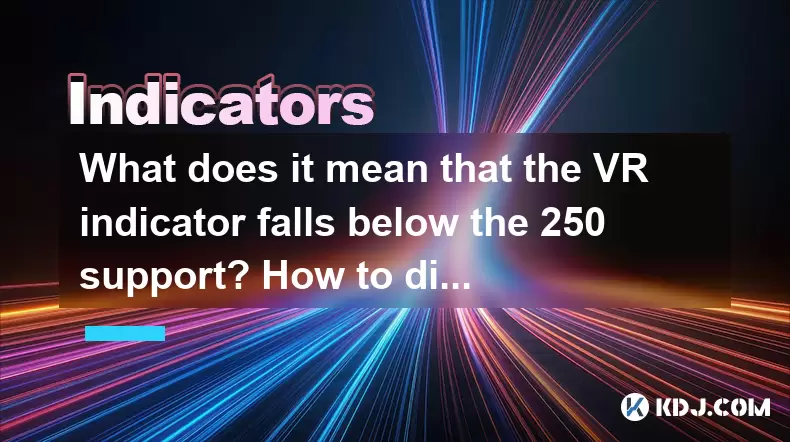
Understanding the VR Indicator and Its Role in Cryptocurrency Trading
The VR indicator, or Volume Ratio indicator, is a technical analysis tool used primarily to assess the strength of price trends based on volume. In the context of cryptocurrency trading, where volatility and sudden price swings are common, the VR indicator helps traders evaluate whether buying or selling pressure is dominant.
When the VR indicator falls below the 250 support level, it signals that selling volume has significantly outpaced buying volume over a defined period. This drop may indicate weakening bullish momentum and could be an early warning sign of a potential trend reversal or a strong correction phase.
What Happens When VR Drops Below 250?
In most applications of the VR indicator, values above 250 suggest strong buying pressure and a healthy uptrend. Conversely, when VR drops below 250, it reflects a shift in market sentiment from bullish to bearish.
- A sharp decline in VR might precede a downward move in price.
- It can confirm bearish patterns like head and shoulders or double tops.
- The lower the VR goes after crossing 250, the stronger the bearish signal becomes.
Traders often combine this with other tools such as moving averages or RSI to avoid false signals, especially in highly volatile crypto markets.
Differentiating Between Normal Pullbacks and Trend Reversals
One of the key challenges for traders is distinguishing between a normal pullback and a trend reversal after observing a drop in VR below 250.
A normal pullback typically occurs within the framework of an ongoing trend. It's a temporary retracement before the trend resumes. On the other hand, a trend reversal implies that the existing trend is ending and a new direction is beginning.
Here’s how to tell them apart:
- Price structure changes: If the price breaks below a key support level previously respected multiple times, it suggests a reversal rather than a pullback.
- Volume behavior: During a pullback, volume tends to be low. A spike in volume during a VR drop below 250 often indicates strong selling pressure and possible reversal.
- Time duration: A quick bounce back from the 250 level supports the idea of a normal callback. Prolonged stay below 250 increases the likelihood of a trend change.
Practical Steps to Confirm Market Behavior After VR Falls Below 250
To make informed decisions after noticing the VR indicator falling below 250, follow these detailed steps:
- Check the timeframe alignment: Ensure you're analyzing the VR indicator across multiple timeframes. For example, if VR drops below 250 on the daily chart but remains above on the weekly chart, the long-term trend may still be intact.
- Use candlestick patterns: Look for reversal patterns such as engulfing candles, harami, or doji near key support or resistance levels.
- Overlay moving averages: Plot the 50-day and 200-day moving averages to see if the price is breaking below major moving average lines.
- Analyze RSI divergence: If the price makes a new high but the RSI doesn’t, it could indicate hidden weakness even before VR confirms it.
- Monitor trading volume: A significant increase in volume during the VR drop reinforces the validity of the bearish signal.
These steps help filter noise and improve the accuracy of your interpretation.
Using Risk Management Tools Alongside VR Signals
Even with a solid understanding of the VR indicator, managing risk is crucial when interpreting its signals. Here's how to integrate risk control into your strategy:
- Set stop-loss orders: Place stop-loss orders just below recent swing lows if going short after a VR drop below 250.
- Adjust position sizes: Reduce exposure if the market appears uncertain despite the VR signal.
- Use trailing stops: If entering a trade based on a confirmed reversal, use trailing stops to protect profits while allowing room for the trend to develop.
- Avoid over-leveraging: Especially in crypto, where prices can swing violently, leverage should be kept minimal or avoided entirely when acting on VR-based signals.
Proper risk management ensures that even if a VR signal turns out to be false, the impact on your portfolio is controlled.
Frequently Asked Questions (FAQ)
Q: Can the VR indicator be used effectively in sideways or range-bound markets?
A: Yes, but with caution. In range-bound conditions, VR oscillates without clear directional bias. Traders should look for repeated tests of 250 support and resistance to identify breakout opportunities.
Q: Is the VR indicator reliable for altcoins as it is for Bitcoin or Ethereum?
A: While the VR indicator works for all cryptocurrencies, low-volume altcoins may produce misleading signals due to erratic volume spikes. It's more reliable on major assets with consistent trading activity.
Q: How often should I check the VR indicator for actionable insights?
A: Monitor it regularly, especially during key price action events. Daily checks are sufficient for long-term traders, while active scalpers may review it hourly alongside other metrics.
Q: What other indicators complement the VR indicator well?
A: Combining VR with moving averages, RSI, and MACD enhances decision-making. These tools provide additional confirmation layers and reduce the chances of acting on false signals.
Disclaimer:info@kdj.com
The information provided is not trading advice. kdj.com does not assume any responsibility for any investments made based on the information provided in this article. Cryptocurrencies are highly volatile and it is highly recommended that you invest with caution after thorough research!
If you believe that the content used on this website infringes your copyright, please contact us immediately (info@kdj.com) and we will delete it promptly.
- BAY Miner & XY Miners: Unlock Daily Earnings with BTC, DOGE, and LTC Cloud Mining
- 2025-06-20 10:25:12
- Decoding the Aaluxx Myth: Maya Protocol and the Smart Economy
- 2025-06-20 10:30:12
- Binance Wallet, Exclusive Token, Launch: What You Need to Know
- 2025-06-20 10:45:12
- CryptoQuant, Bitcoin, and Market Drops: Decoding the Signals
- 2025-06-20 11:05:12
- Bitcoin, Emerging Risk, and Treasury Companies: A New York Perspective
- 2025-06-20 11:05:12
- Semler Scientific's Bitcoin Bet: Bold Move or Risky Gamble?
- 2025-06-20 10:50:12
Related knowledge
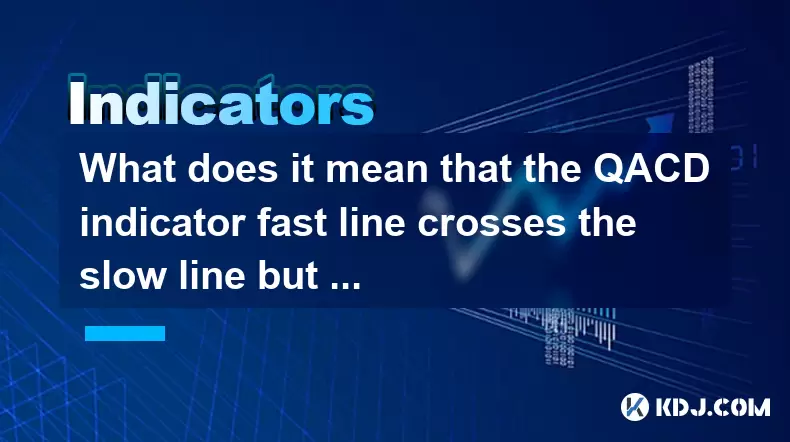
What does it mean that the QACD indicator fast line crosses the slow line but does not increase in volume?
Jun 20,2025 at 12:22pm
Understanding the QACD Indicator and Its ComponentsThe QACD (Quantitative Accumulation Convergence Divergence) indicator is a technical analysis tool used by traders to identify potential trend reversals, momentum shifts, and entry or exit points in cryptocurrency markets. It consists of two primary lines: the fast line, which reacts more quickly to pri...
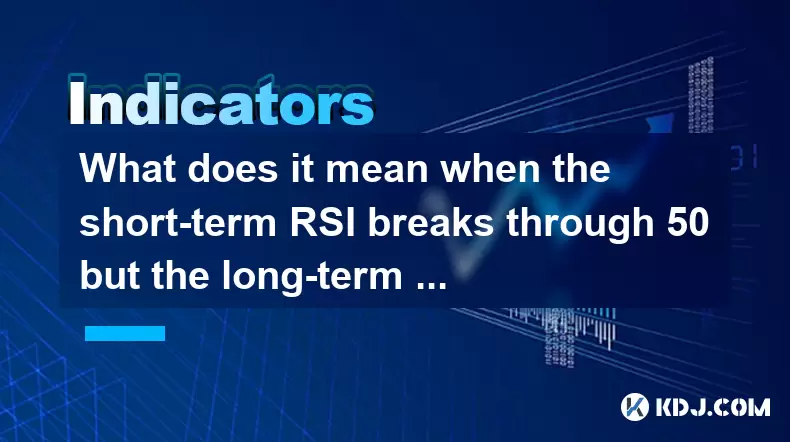
What does it mean when the short-term RSI breaks through 50 but the long-term RSI does not move in the RSI indicator?
Jun 20,2025 at 10:42am
Understanding the RSI Indicator and Its Dual-Term ApplicationThe Relative Strength Index (RSI) is a widely used momentum oscillator in technical analysis, primarily for identifying overbought or oversold conditions in an asset’s price movement. It typically operates on a scale from 0 to 100, with levels above 70 considered overbought and below 30 consid...
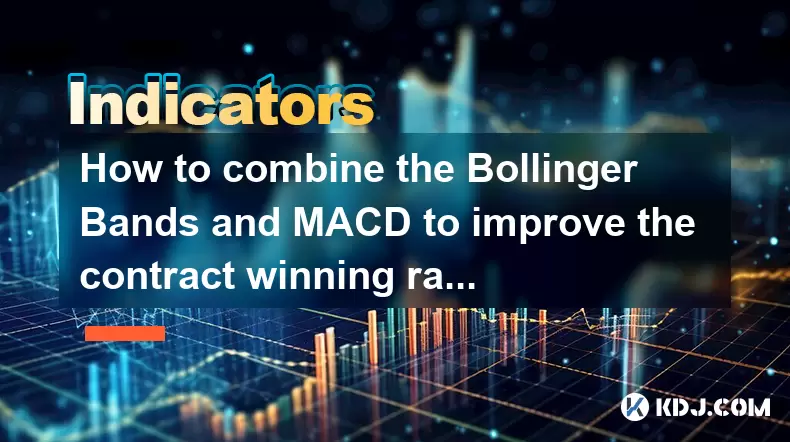
How to combine the Bollinger Bands and MACD to improve the contract winning rate?
Jun 19,2025 at 06:35pm
Understanding Bollinger Bands and MACD IndicatorsTo effectively combine Bollinger Bands and the MACD (Moving Average Convergence Divergence), it's essential to first understand what each indicator represents. Bollinger Bands consist of a middle moving average line and two outer bands that adjust based on market volatility. When prices move toward the up...
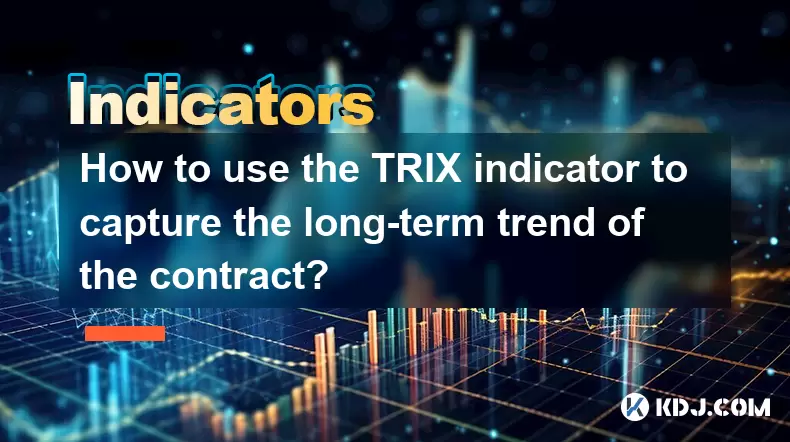
How to use the TRIX indicator to capture the long-term trend of the contract?
Jun 20,2025 at 09:14am
What Is the TRIX Indicator?The TRIX (Triple Exponential Average) indicator is a momentum oscillator used to identify oversold and overbought conditions, as well as potential trend reversals in financial markets. It is calculated by applying a triple exponential moving average to price data and then taking the percentage rate of change of that smoothed v...

How does the long lower shadow of the K line indicate the formation of the bottom of the contract?
Jun 19,2025 at 05:00am
Understanding the Long Lower Shadow in K-Line AnalysisIn cryptocurrency trading, K-line analysis plays a pivotal role in determining market sentiment and potential price reversals. A long lower shadow, also known as a long wick, is one of the most telling candlestick patterns that traders look for when assessing whether a bottom might be forming in a co...
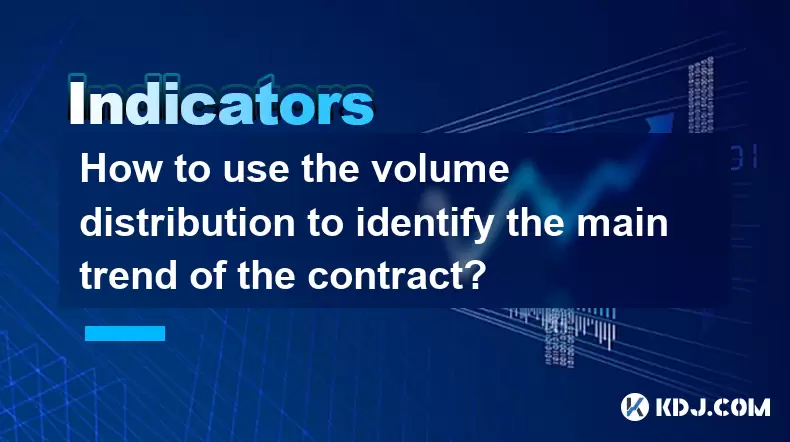
How to use the volume distribution to identify the main trend of the contract?
Jun 20,2025 at 03:56am
Understanding Volume Distribution in Cryptocurrency ContractsIn the realm of cryptocurrency trading, particularly within futures and perpetual contracts, volume distribution plays a pivotal role in deciphering market sentiment. Unlike spot markets, contract trading involves leveraged positions that can amplify both gains and losses. To navigate this com...

What does it mean that the QACD indicator fast line crosses the slow line but does not increase in volume?
Jun 20,2025 at 12:22pm
Understanding the QACD Indicator and Its ComponentsThe QACD (Quantitative Accumulation Convergence Divergence) indicator is a technical analysis tool used by traders to identify potential trend reversals, momentum shifts, and entry or exit points in cryptocurrency markets. It consists of two primary lines: the fast line, which reacts more quickly to pri...

What does it mean when the short-term RSI breaks through 50 but the long-term RSI does not move in the RSI indicator?
Jun 20,2025 at 10:42am
Understanding the RSI Indicator and Its Dual-Term ApplicationThe Relative Strength Index (RSI) is a widely used momentum oscillator in technical analysis, primarily for identifying overbought or oversold conditions in an asset’s price movement. It typically operates on a scale from 0 to 100, with levels above 70 considered overbought and below 30 consid...

How to combine the Bollinger Bands and MACD to improve the contract winning rate?
Jun 19,2025 at 06:35pm
Understanding Bollinger Bands and MACD IndicatorsTo effectively combine Bollinger Bands and the MACD (Moving Average Convergence Divergence), it's essential to first understand what each indicator represents. Bollinger Bands consist of a middle moving average line and two outer bands that adjust based on market volatility. When prices move toward the up...

How to use the TRIX indicator to capture the long-term trend of the contract?
Jun 20,2025 at 09:14am
What Is the TRIX Indicator?The TRIX (Triple Exponential Average) indicator is a momentum oscillator used to identify oversold and overbought conditions, as well as potential trend reversals in financial markets. It is calculated by applying a triple exponential moving average to price data and then taking the percentage rate of change of that smoothed v...

How does the long lower shadow of the K line indicate the formation of the bottom of the contract?
Jun 19,2025 at 05:00am
Understanding the Long Lower Shadow in K-Line AnalysisIn cryptocurrency trading, K-line analysis plays a pivotal role in determining market sentiment and potential price reversals. A long lower shadow, also known as a long wick, is one of the most telling candlestick patterns that traders look for when assessing whether a bottom might be forming in a co...

How to use the volume distribution to identify the main trend of the contract?
Jun 20,2025 at 03:56am
Understanding Volume Distribution in Cryptocurrency ContractsIn the realm of cryptocurrency trading, particularly within futures and perpetual contracts, volume distribution plays a pivotal role in deciphering market sentiment. Unlike spot markets, contract trading involves leveraged positions that can amplify both gains and losses. To navigate this com...
See all articles

























































































